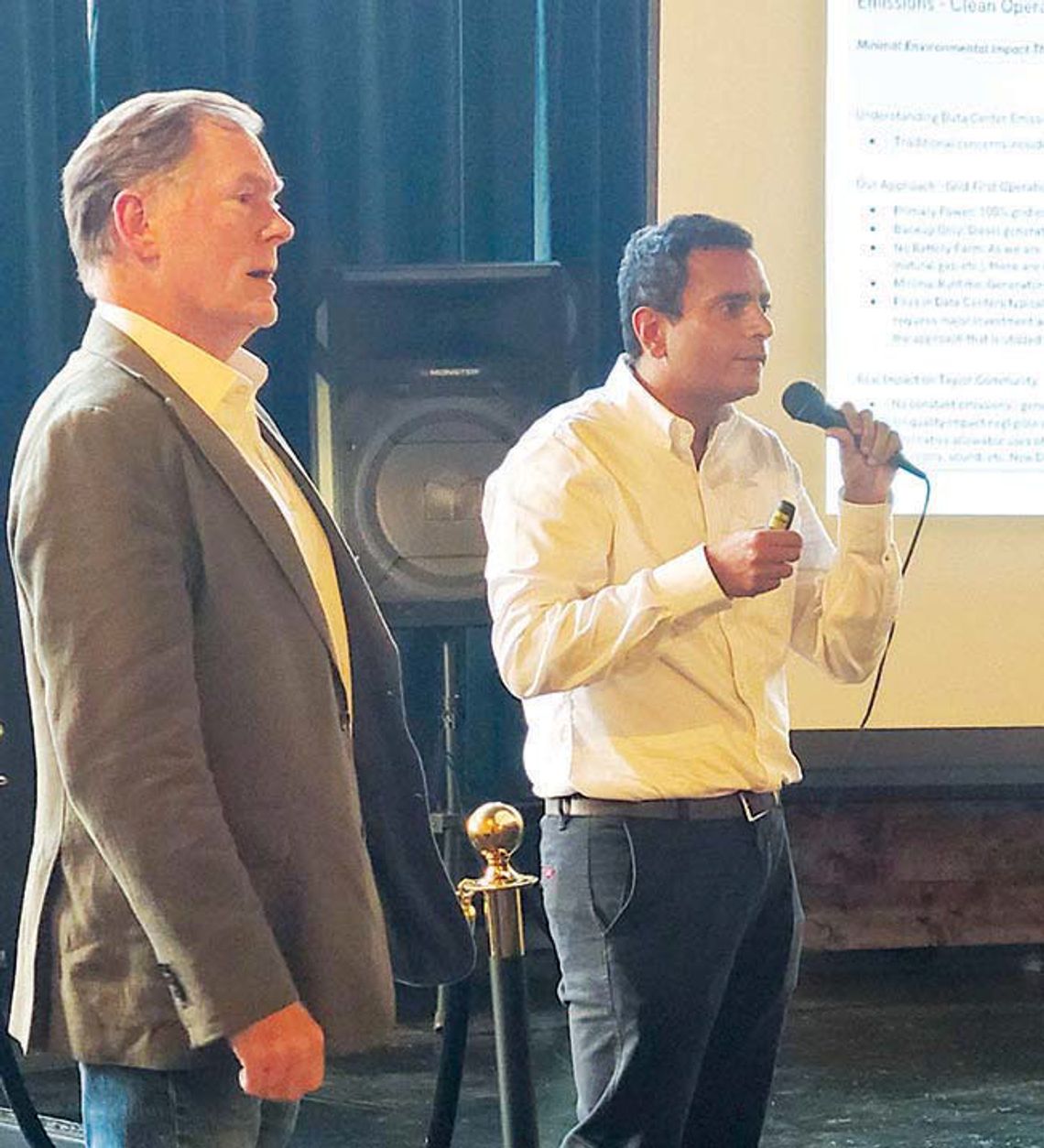Questions remain over data-center project Neighbors meet with company reps to air concerns
A meeting Monday at The Venue Taylor, 115 W. Second St., between Blueprint Data Centers representatives and residents concerned about the facility’s proximity to their homes did little to sway neighbors’ opposition to the project.
Community supporters say they will carry on the fight to keep the hightech center out of their neighborhood, and plan to speak at the Thursday, July 24 City Council meeting, 6 p.m. in Council Chambers, 400 Porter St.
Lured by the growth of Samsung Austin Semiconductor and other technology initiatives, the company wants to build a data center at 1601 E. MLK Jr. Blvd. City officials have argued the project will generate millions in revenue for the town and the Taylor Independent School District.
Company officials at the sometimes-contentious meeting said they are not turning a deaf ear to their potential neighbors.
“We structured it as best to support the community right from the start when we envisioned the project a year and a half ago,” Yaerid Jacob, founder and CEO of Blueprint Data Centers, told the audience of community members, businesspeople and city officials. “Your concerns matter to us. Our commitment to you and the city has been a priority right from day one.”
Still, some neighbors felt their views were not being considered.
“They aren’t listening to make changes, they’re listening to say they did,” said Anthony Watson.
Can’t be moved
Some who attended the meeting hoped to convince the company that an established residential neighborhood was not the right place for their project. They came with concerns about the health risks, diminished quality of life and safety over having a $1 billion data center and 60-megawatt electric substation a few hundred feet from their back
doors. Jacob told the audience the project depended on that particular site and could not be moved.
“There isn’t another site that’s viable for a data center in Taylor,” Jacob said.
Jacob said the reason the project can only be developed in that one location is because of the need for electricity – Blueprint will use 30 megawatts of power to start, but the company hopes to ramp up to 60 megawatts.
Oncor is building a substation on the site to provide electricity.
“The utility tells us where the power is. It is not up to us to tell the utility where the power is,” he said.
The CEO told the crowd data centers exist near neighborhoods in Round Rock and Georgetown, and the Georgetown Economic Development Corp. told him there had been no complaints.
Environmental study
Others who attended wanted answers about the environmental effects of data centers. Jacob said there was an independent environmental study produced and given to the city.
Some audience members said they had asked the city for a copy of the study but added they had not seen the document.
Jacob did not have any information about the study to tell the audience other than that there were no negative impacts.
“If there was anything negative, we would say, ‘Oh, sorry, we’ll fix it,’” he told the group.
The CEO said all the negative environmental impacts were from evaporative- cooling systems, not closed-loop systems like the one Blueprint has planned.
“Why did you not bring the independent study information for us? This is inadequate and it’s too late,” Lisa Drummond said.
Others agreed that if the study was available, it should have been presented at the meeting.
“We want proof. We want documents. We want it in writing,” Sara Winters said.
Jake Ring, a procurement consultant with Blueprint, estimated that at full capacity the plant would use about 40,000 gallons of water which would be trucked in, mixed with a glycol chemical and used to fill the closed-loop cooling system.
The system will not need daily water usage since the closed loop prevents evaporation or other regular water loss.
Ring said the water may need to be recharged or topped off every five years, though Jacob said it would basically never need to be.
A possible wrinkle
New information about the site for the center may add another wrinkle to the project, neighbors said.
Members of the south Taylor community
showed the Press a deed dated July 7, 1999, giving 87 acres of land to the Texas Parks and Recreation Foundation to be held in trust for future use as parkland.
Community members said this is the same land that included a purchase by Blueprint of 53 acres from the Taylor Economic Development Corp.
Neighbors said they are researching how land they believe was intended for a park was sold for a data center. According to the city website, the parcel was zoned for heavy industry from 2005-23 and is now zoned as an employment center.
More information about the project can be found at taylortx. gov/1293/Blueprint-Projects-Data-Center.







